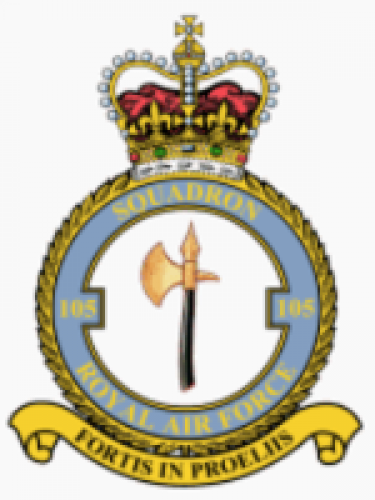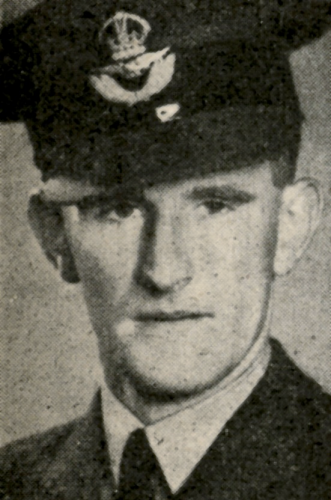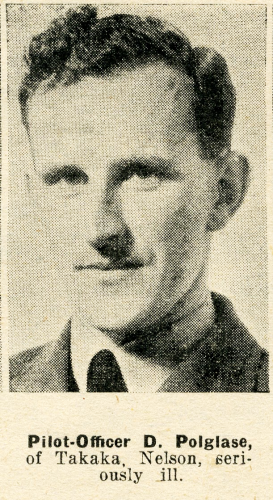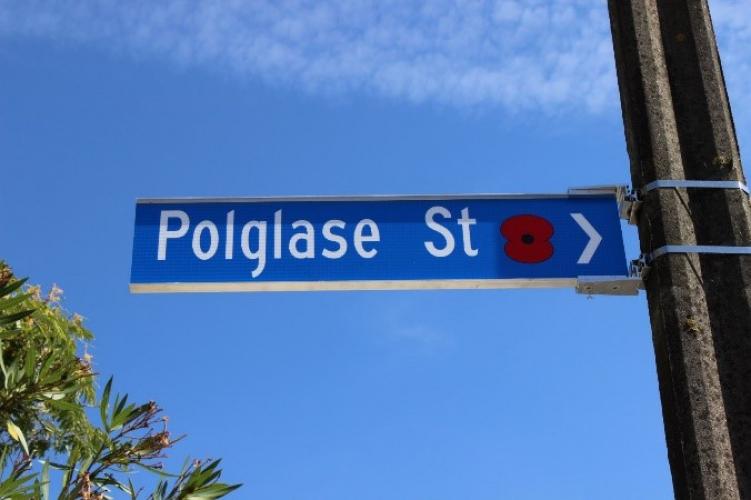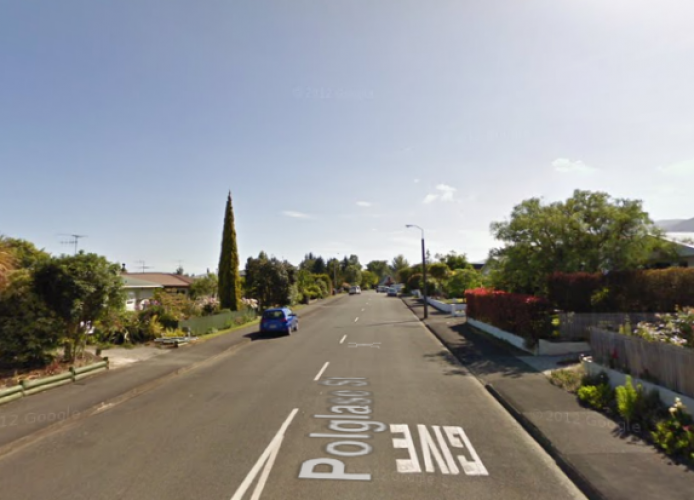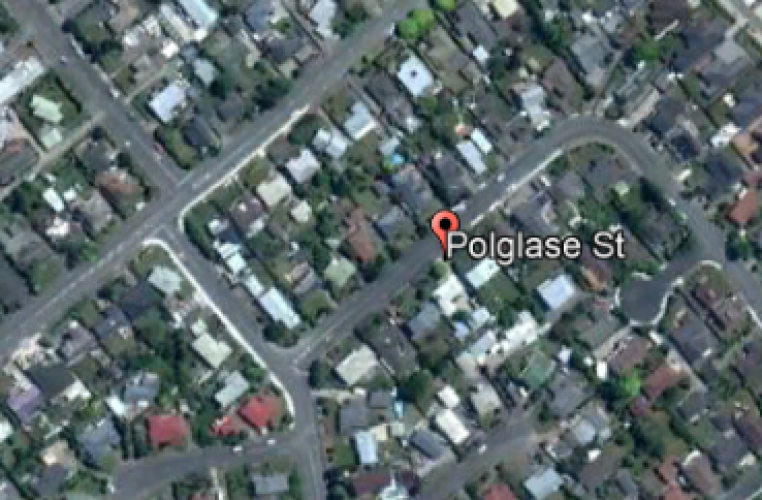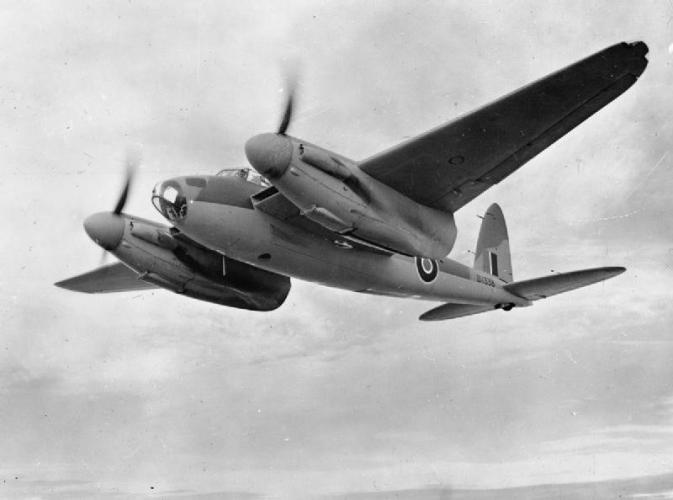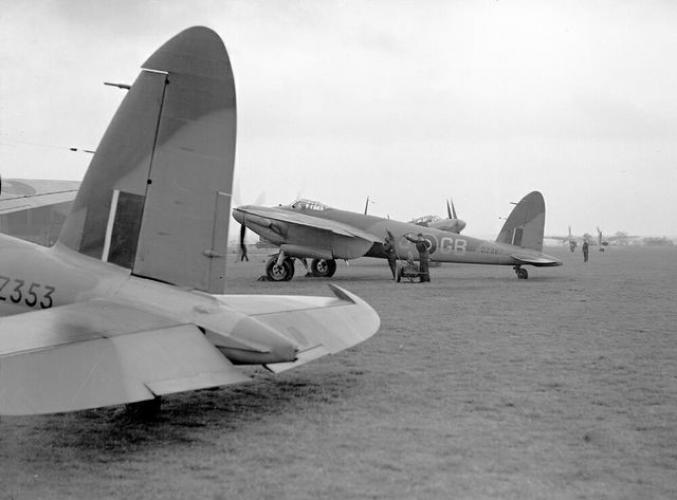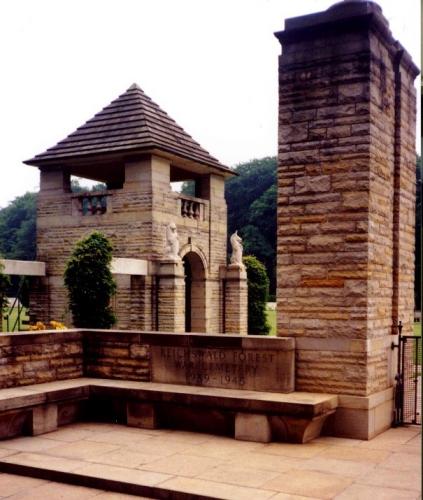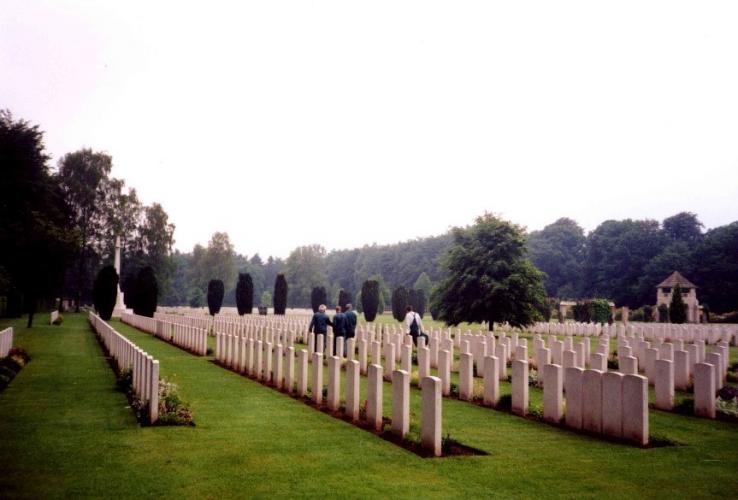244 Polglase Street Richmond, new street sign 2019
Reason for the name
This street in Richmond is named in honour of Flying Officer David Polglase RNZAF who was killed in action in 1943 World War 2.
Fallen servicemen have been remembered across Tasman district in various ways including the naming of streets and buildings, the planting of trees and the installation of monuments. In conjunction with the 100-year anniversary of the signing of the armistice that ended the fighting between Germany and the Allies during World War I, Tasman District Council installed new street signs acknowledging the service of fallen soldiers from Richmond. The move comes after the Richmond Waimea RSA asked the council to take part in the Poppy Places project by adding poppies to street signs named after fallen soldiers.
Richmond Waimea RSA president Ross Norgate and Tasman District Council’s Megan Bell managed the project. Tasman mayor Richard Kempthorne said the council was proud to be part of the project.
Author: The Poppy Places Trust
NZ415714 Flying Officer (Pilot) David Polglase joined the Royal New Zealand Air Force, during World War II, 1939-1945 and posted to 105 Squadron, RAF Europe (Air) operations. He was killed on air operations
David was the son of George Davis Polglase and Gertrude Ellen Polglase of Takaka. He was the husband of Olive May Polglase of Takaka.
David died on 11 April 1943, Age 27 in Germany and is buried at Reichswald Forest War Cemetery, Kleve, Nordrhein-Westfalen, Germany 15 G.
No. 105 Squadron was a flying squadron of the Royal Air Force, active for three periods between 1917 and 1969. It was originally established during the First World War as a squadron of the Royal Flying Corps and disbanded after the war. Reactivated shortly before the Second World War, it was inactive again after the conflict. During its second existence it was a bomber unit and had the distinction to be the first to operate the de Havilland Mosquito light bomber. During the 1960s it was reactivated again for six years to provide transport support for the British Army in the Aden Protectorate and the Far East.
The squadron was formed again on 12 April 1937 at RAF Harwell from B Flight of 18 Squadron as a day bomber squadron. Its first equipment was the biplane Hawker Audax while it awaited delivery of the more modern monoplane Fairey Battle. The Battles arrived in August 1937 and 105 Squadron was one of the first to be operational on the type.
At the start of the Second World War in September 1939, as part of the Advanced Air Striking Force, the squadron moved to France, initially on reconnaissance missions along the France-German border. The Germans invaded France in May 1940 and the squadron was soon busy attacking the advancing German troops. One of the most important targets was the bombing of the bridges over the River Meuse in an attempt to slow down the German advance. It suffered heavily from the attention of German fighters and the squadron had to retire back to England in June 1940. At RAF Honington the squadron was re-equipped with the Bristol Blenheim to join 2 Group's offensive against the invasion ports and German shipping. The squadron had many losses particularly from the German Flak ships. In October 1940 part of the squadron was detached to Malta to carry out attacks on Axis shipping in the Mediterranean Sea. It moved to RAF Swanton Morley in Norfolk. After losing its commanding officer in a raid near Stavanger in 1941, it gained a new CO, Wing Commander H.I. Edwards. For his part in planning and leading a low level daylight attack on the port of Bremen he was awarded the Victoria Cross.
In October 1941 the Malta detachment returned to England and the squadron began to operate at a reduced level. The reason for the reduction in sorties was the squadron had been chosen to be the first to use the Mosquito Mk.IV and was concentrating on training. In December the squadron moved to RAF Horsham St Faith near Norwich.
On the 2 July 1942, No. 105 Squadron raided the submarine yards at Flensburg, near the border of Germany and Denmark. Flying a Mosquito FB Mk. IV, Reg. DK 298, Wing Commander Alan Robertson Oakeshott DFC flew his final mission, departing from RAF Horsham St. Faith, Norfolk. The bomb load of 4,000lbs was successfully dropped on the submarine slipways. Shortly after leaving the target area the aircraft was intercepted by a Focke-Wolfe 190. The Mosquito was shot down. W/Cdr (33209) Alan Robertson Oakeshott DFC (pilot) RAF was killed. He is commemorated on the RAF Runnymeade Memorial and on the Naphill War Memorial, in Buckinghamshire, near RAF High Wycombe (formerly Bomber Command). F/O (44980) Vernon Frank Evans Treherne DFM (obs) RAF – was also killed in this action.
Another early Mosquito operation was a high-level attack on Cologne as a follow-on to the "thousand-bomber" raid on the city. It was not the best use of the new aircraft and the squadron soon moved to low-level precision attacks where the aircraft had an outstanding performance. The first precision attack was against the Gestapo Headquarters in Oslo on 25 September 1942. The squadron was the first to do a daylight raid on Berlin on 30 January 1943. By June 1943 the squadron joined No. 8 (Pathfinder) Group and upgraded to Oboe-equipped Mosquito Mk.IXs. It performed precision target-marking for Bomber Command until the end of the war. The squadron was disbanded at RAF Upwood on 1 February 1946.

